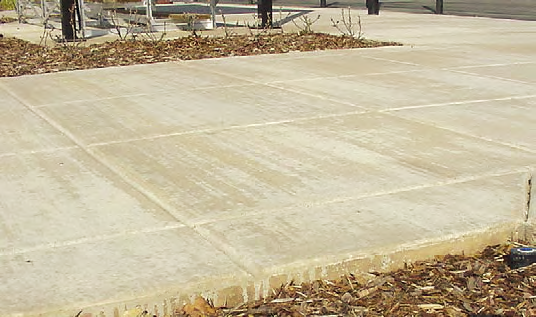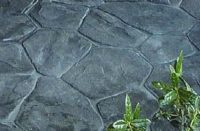The products and finishes in the decorative industry are becoming more sophisticated – polymer-modified toppings, nanotechnology sealers, and sustainable stains and dyes to name a few. These high-end materials and systems are the new “buzz” in the industry and seemed to dominate the trade-show conversations this past winter season. New technology is great, and I am a big supporter of REAL technological advancements. But at the same time, we all need to remember the old tried-and-true products that still make up a large portion of the industry, and more importantly, refresh ourselves on the fundamentals, the right way to use them.
As often happens, a recent phone call started me thinking about this. The person on the other end was asking why their recently poured colored-concrete basement floor was the wrong color, had a white haze over the surface, and was darker on the edges compared to the middle. As I spent the next 10 minutes explaining the cause of each issue, I realized how important the basic products and the fundamentals of their installation are in what we do every day.
When it comes to basic nonglamorous products that still have a huge impact on our industry, you don’t have to look much further than iron oxide pigments. The workhorse product that started the decorative concrete industry more than 50 years ago is still the single most-consumed product in our industry today. Also known as integral stain, dye, or just plain color, iron oxide is nothing more than manufactured rust. What makes it such a workhorse and a staple in our industry is that it is the only colorant that can withstand the extreme alkaline environment of concrete without fading or leaching.
Iron oxide particles, as produced for the construction industry, are 10 times finer than cement particles. When added into a concrete mix, the iron oxide particles actually surround and coat the cement particles. This is why integral color is dosed or metered based on the cement content, not on the amount of sand, stone or water. That the average color loading is only 2.5 pounds of pigment per 94 pounds of cement (2.6 percent) demonstrates the coloring power of iron oxide pigments. This coloring power is called tinting strength, and it is important to note that not all iron oxides have the same tinting strengths. Not only do different manufacturing processes affect the tinting strength, but adding inert fillers when blending colors can dilute or reduce the tinting strength of pigments. To ensure you are getting the strongest tinting strength, do your homework and avoid cheap color that contains fillers.

In addition to the basics of what iron oxide pigments are, I think knowing the fundamentals of how they are used and understanding common problems associated with their use are even more important. There are five key components that determine the final color when using iron oxide pigments in concrete.
The pigment: As we discussed previously, using a good quality pigment from a reputable manufacturer is important. Proper blending and color consistency is something you as the installer have little to no control over, so trust in your supplier is important.
Water content: Also known as water-to-cement ratio, this is by far the No. 1 cause of colored concrete issues. The amount of water used to make concrete has a dramatic and permanent effect on the final color. The more water used, the lighter the color. This not only holds true for water used in the mix, but also for any water added to the surface during the finishing process. Use as little water as possible, and consider chemical admixtures (plasticizers, water reducers, etc.) to reduce the amount of water needed. No matter what – stay consistent.
Cement content: The next-biggest factor that affects the final color is the cement content. The amount of cement used in a mix is critical because it is what the pigment content is based on. Start changing the amount of cement from batch to batch and you WILL get a color change. The place where most installers get in trouble is dosing by “sack mix,” not by actual cement weight. Five-sack mix can have actual cement content ranging from 460 pounds to 650 pounds.
Cement color: Probably the most misunderstood and misdiagnosed cause of colored concrete issues is the color of the cement and the impact it has on the final color. While most cement manufacturers strive for overall product consistency, they do not test for color. Tests have found that cement coming from the same plant can have dramatic color variances over a period of weeks and months. If you have long time gaps (weeks or months) between colored pours, it might be worth your time and money to keep cement retains to ensure the color has not changed.
Aggregate color: While aggregate color has little to no direct impact on actual color, it can have an indirect impact on the overall mix. A sand mix will not develop the same color as an aggressive stone mix. Also, consider how aggregate will impact the final color if an exposed aggregate finish is performed.
As with most tried-and-true products and processes, success usually comes down to one tried-and-true guideline. In the case of iron oxide pigments used in integral color, the rule of thumb is – stay consistent! Control your environment, control your water, and try to keep everything as consistent as possible. Iron oxide pigments are not going anywhere soon, so the more you understand regarding the basics of how they work, the better off you will be.













